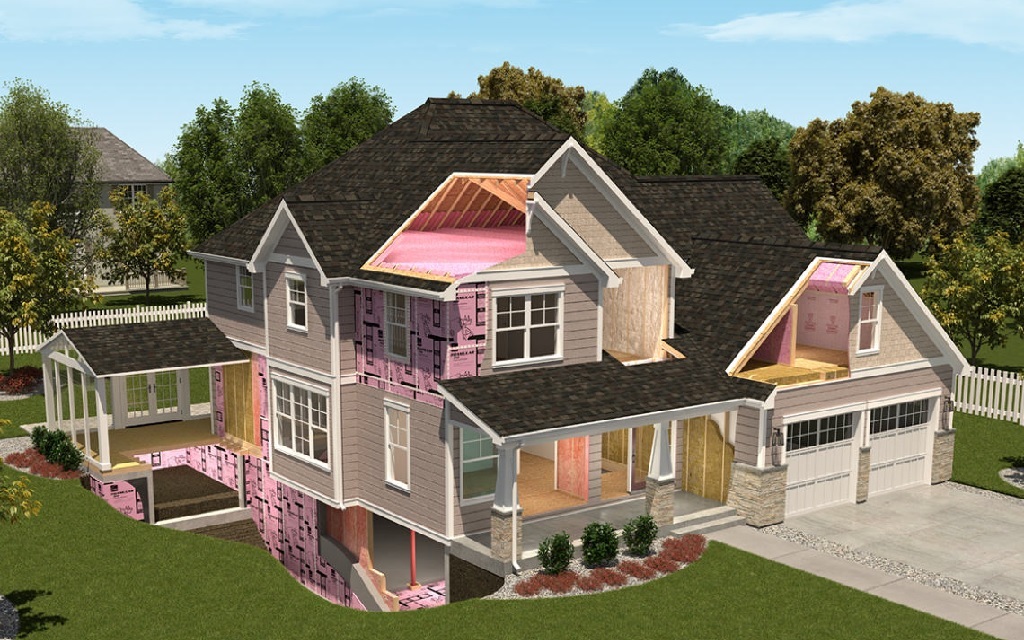The main image is courtesy of Owens Corning which illustrates several types and locations of insulation.
Maintaining a comfortable temperature in your home can be difficult and costly if you don’t have proper insulation. Insulation is essential for keeping the heat inside during winter and outside during summer. Effective insulation also helps to keep energy costs down by maintaining consistent temperatures throughout the year.
Given the importance of insulation, homeowners should understand which type works best for their homes, and when they may need to replace any existing insulation. With this knowledge, homeowners can make informed decisions about their home’s insulation needs and ensure that their homes are well insulated all year round.
Table of Contents
- What is Home Insulation?
- Types of Insulation
- Installing Home Insulation
- When to Replace Your Existing Insulation
- Benefits of Home Insulation
- How Much Does Insulation Cost?
- Top Insulation Manufacturers
Also see:
What is Home Insulation?
Home insulation is material that stops heat transfer in and out of a home. Insulation can consist of a wide range of materials, such as fiberglass, cellulose, foam board, and rigid foam. Each type of insulation has pros and cons, so homeowners need to be familiar with the various traits and tradeoffs to understand which type would best suit their needs.
Effective insulation will enable your home to maintain consistent indoor temperatures which means that your heating and cooling systems will not have to work as hard, or as frequently. To maintain comfort, the warm air lost during the winter must be replaced by your heating system, while the heat gained during the summer will need to be removed by your cooling system. Properly insulating your home will decrease this year-round heat flow by providing an effective resistance to the flow of heat, measured by its R-value.
The R-value of a given insulation material is a measurement of its resistance to heat flow, from warmer to colder areas, specifically rated in terms of its thermal resistance. The higher the R-value, the greater the effectiveness of the insulation. The R-value will depend on the type of insulation, thickness, and density.
Also see:
Types of Insulation
There are several different types of insulation. Here are the most widely used insulation types:
- Fiberglass Insulation
- Cellulose Insulation
- Foam Board Insulation
- Spray Foam Insulation
- Mineral Wool Insulation
- Radiant Barrier Insulation
1. Fiberglass Insulation
Fiberglass insulation comprises of small glass fibers and comes as batting or loose fill. It is a popular choice among homeowners due to its:
- Affordability
- Availability
- Ease of Installation
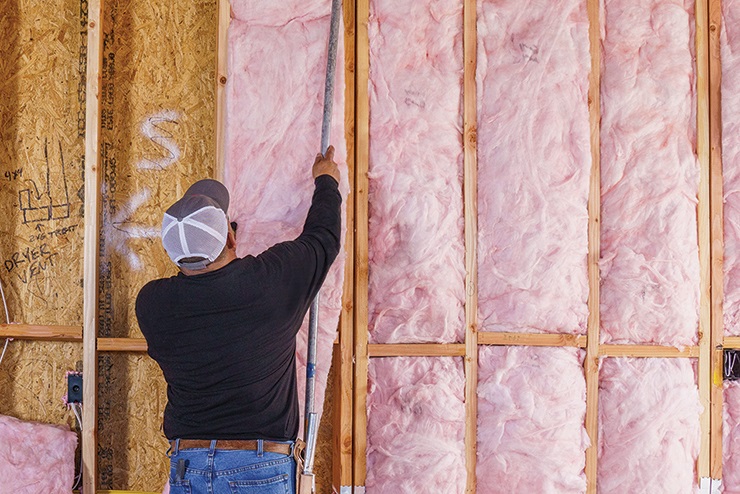
Image courtesy of Owens Corning
2. Cellulose Insulation
Made from recycled materials, such as newspapers and cardboard, cellulose insulation is a popular choice for its eco-friendly credentials. It’s also fire-resistant and effective at stopping air leaks.
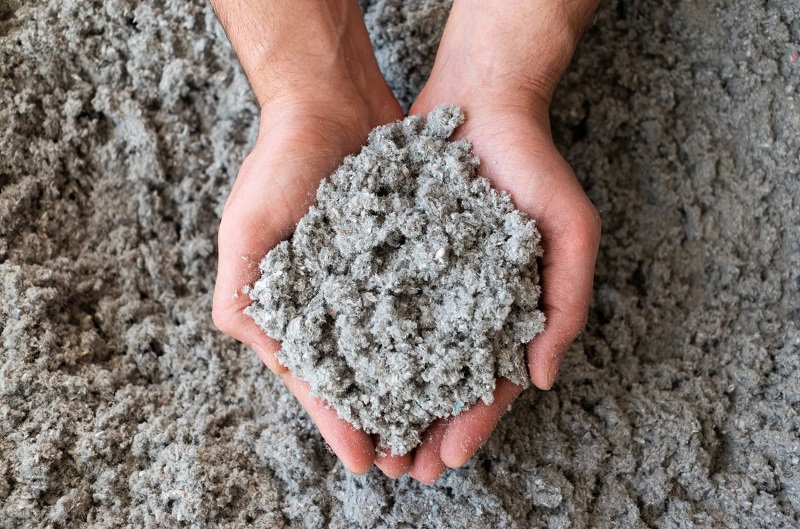
3. Foam Board Insulation
Foam board insulation consists of rigid panels made from polystyrene, polyisocyanurate or polyurethane installed in walls, floors, and ceilings. This can be an effective type of insulation, but it can be expensive and time-consuming to install.
Rigid foam board insulation is commonly used in exterior wall assemblies (AKA exterior continuous insulation) and for below-grade walls, such as in basements and crawlspaces.
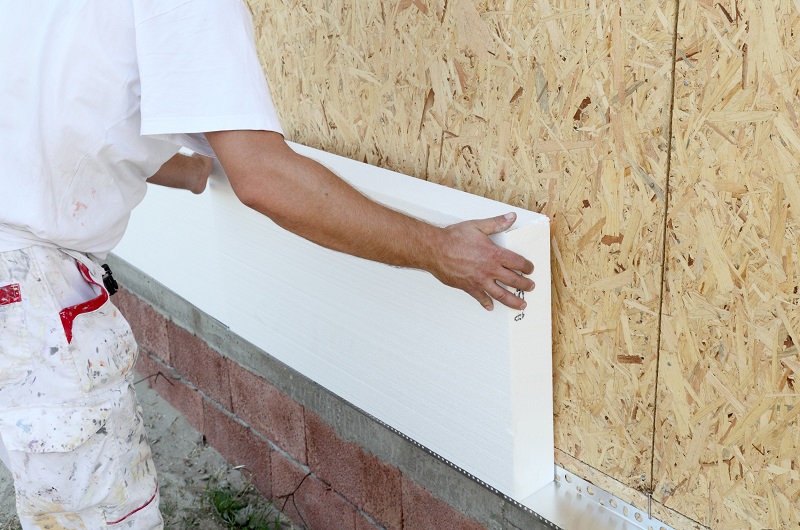
4. Spray Foam Insulation
Spray foam insulation is made from polyurethane and used to fill in cracks and crevices. It provides a tight seal that can help reduce air leakage, but it can be expensive and may need to be professionally installed.
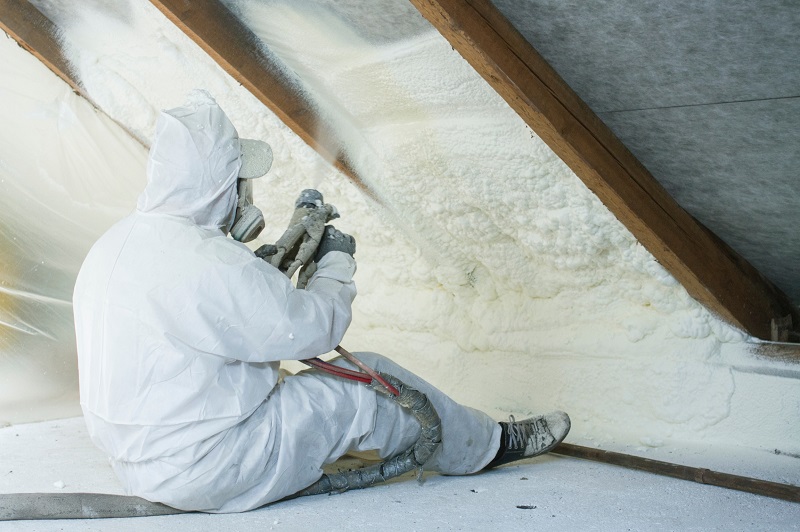
5. Mineral Wool Insulation
Mineral wool insulation is made from rock or slag wool and comes in batts or loose-fill. This type of insulation has a high R-value, is fire-resistant and is resistant to moisture and can prevent mold growth. It is typically more expensive than other types of insulation.
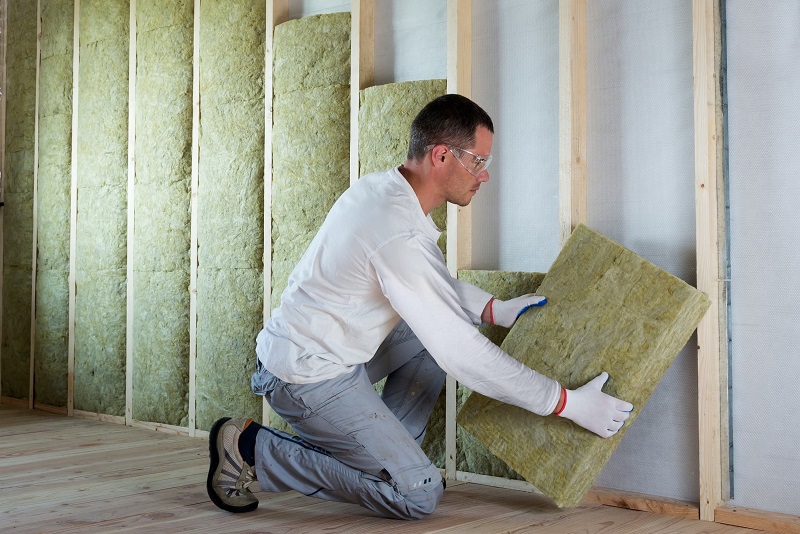
Image courtesy of Rockwool
6. Radiant Barrier Insulation
Radiant barrier insulation is installed in the attic and reflects heat from the sun away from the home. This type of insulation is typically made from aluminum foil or plastic films with reflective surfaces, and has a low R-value. Radiant barrier insulation is effective in hot climates as it will keep your home cooler during the hot months, which will reduce your cooling costs.
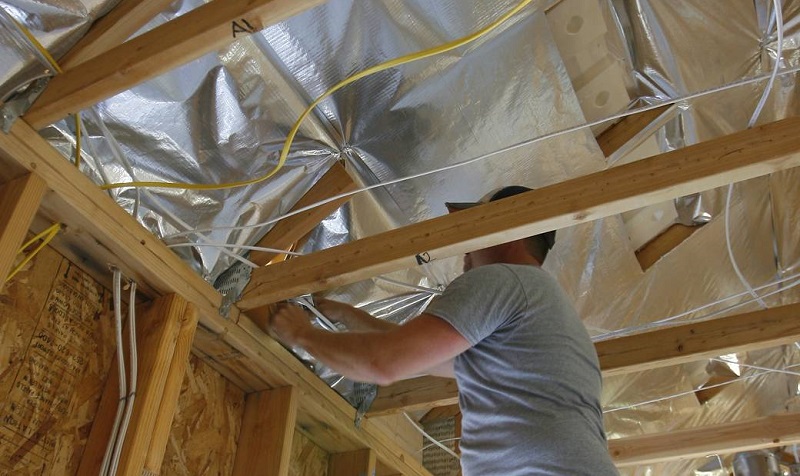
Image courtesy of RadiaSource
According to the US Department of Energy, some studies have shown that radiant barriers can reduce energy costs by 5% to 10% in warm sunny climates. The reduced heat gain may also allow for the use of a smaller air conditioning system.
However, this type of insulation is not effective in cold climates. Also the type and layout of your roof (e.g. slope; roof shingles; ventilation) will all have an impact on how much heat can be reflected.
These are just a few types of insulation homeowners should consider when deciding what type to install in their homes.
Installing Home Insulation
It’s essential to ensure proper insulation installation so that it works effectively. The type of insulation homeowners choose will depend on the space the insulation is needed in, the climate they live in, and their budget.
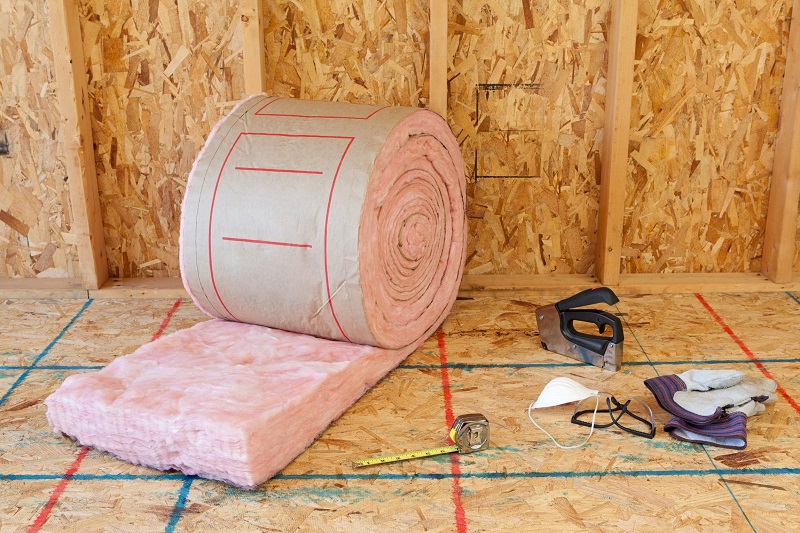
Homeowners may install their insulation if they feel comfortable or hire a professional for more complex installations. According to insulation experts at iFOAM:
“Proper insulation can make the air you breathe healthier and more comfortable.”
When to Replace Your Existing Insulation
Homeowners also need to be aware of when their home’s insulation needs replacing. When it becomes time to replace your existing insulation, the material will often appear to be wet, thinning, or generally broken down. Also, insulation can fall or be dislodged from its original positioning, which will further hinder its effectiveness.
Signs that it may be time to replace your insulation include:
- High Energy Bills
- Uneven Temperatures in the Home
- Visible Damage or Deterioration
- Age of Insulation
- Outside Noises
1. High Energy Bills
If your energy bills are higher than average, it could be a sign that your home’s insulation is not working effectively. Given that changes in energy usage and corresponding costs may be subtle month-to-month, or even year-over-year, be sure to keep historic annual records to check for more significant changes (e.g. going back a few years).
2. Uneven Temperatures in the Home
Poorly insulated homes can lead to noticeable uneven temperatures throughout the house, making it challenging to regulate the indoor climate.
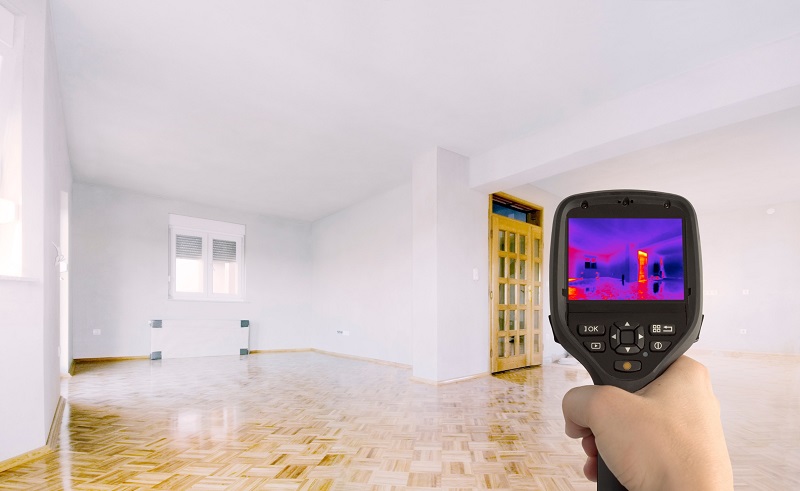
3. Visible Damage or Deterioration
Your insulation may need replacing if you see any signs of damage in your home’s insulation, such as falling, thinning or broken pieces.
4. Age of Insulation
Insulation should be replaced every 10-15 years, as it can break down over time and lose its effectiveness. As part of staying abreast of the overall health and condition of your home be sure to keep household records on the age and expected lifespans of key components and elements of your home. Knowing when you are in the later years of your insulation’s expected lifespan can make replacement an easier decision to make.
5. Outside Noises
If you start noticing more sounds and noises from outside your home through your walls and floors, this could be an indication that your insulation needs replacing. Besides impeding heat flow, insulation also provides sound insulation between rooms and from outside your home.
Ignoring any of these signs can put you at risk of losing money in the form of higher energy bills and incurring damage to your home. Take the time to assess your home’s insulation needs proactively, taking action when possible, or seeking outside professional assistance when unsure of which course to take.
Also see:
Benefits of Home Insulation
- Improved Comfort Levels
- Better Air Quality
- Noise Reduction
- Increase in Home Value
- Greater Energy Efficiency
1. Improved Comfort Levels
One of the main benefits of home insulation is the improved comfort levels it provides. Insulation helps maintain a consistent temperature throughout the house, so you’ll no longer experience hot or cold spots. This makes your home more comfortable and reduces the strain on your heating and cooling systems, which could lead to lower energy bills.

Also see:
2. Better Air Quality
Home insulation has many benefits, and one of the most essential advantages is improving the air quality inside the house. Home insulation ensures that there is less leakage of air, which inhibits contaminants from entering the house. With proper insulation, households can maintain air quality by significantly reducing levels of allergens and pollutants, which can lead to respiratory problems.
As a result, the health of residents is not compromised, and the risk of illness is minimized. Reduced air leakage also leads to lower energy consumption due to consistent indoor temperatures, making the house more sustainable and eco-friendly.
Also see:
3. Noise Reduction
Insulating your home can also help reduce noise levels. The insulation acts as a sound barrier, preventing unwanted noises from entering the house and protecting you from outside disturbances. This means you can enjoy peace and quiet in your home without being disturbed by external noises.
4. Increase in Home Value
Home insulation can also add to the value of your house. Installing proper insulation is a great way to ensure your house is energy-efficient and can help you get a higher price if you decide to put it on the market.
5. Greater Energy Efficiency
Finally, investing in home insulation can make your home more energy-efficient. By installing proper insulation, you will be taking steps to ensure that your house consumes less energy, which reduces the amount of electricity and other resources needed to keep it running. This will result in lower utility bills and reduced environmental impact.
Also see:
How Much Does Insulation Cost?
Home insulation costs depend on the size and type of insulation. It also depends on the area being insulated and whether any additional work needs to be done.
According to a recent Forbes article:
The average cost of home insulation is between $3,000 and $10,000 for a 2,000 square foot home, or between $1.50 and $5.00 per square foot.
Generally, it costs less to protect a more prominent space because you can use fewer materials in larger areas. Some types of insulation require additional labor for installation, which can increase the cost.
In conclusion, home insulation is a great way to make your house more comfortable, healthy, and energy-efficient. It also adds value to your property, which can be beneficial when selling. Therefore be sure to take time to assess your home’s insulation needs and consider investing in proper insulation to reap all these benefits.
Top Insulation Manufacturers
Additional Related Articles
- 7 New Innovations in New Home Building
- Building Technologies for Disaster Resistant Homes
- Indoor Air Quality Resources
- UV-C Products to Make Your Home Healthier & Virus Free
- Expert Tips to Lower Your Home’s Heating Bill
- How to Extend the Life of Your Home’s Exterior Paint
| Purgula is reader-supported. When you click on links to other sites from our website, we may earn affiliate commissions, at no cost to you. If you find our content to be helpful, this is an easy way for you to support our mission. Thanks! Learn more. |

